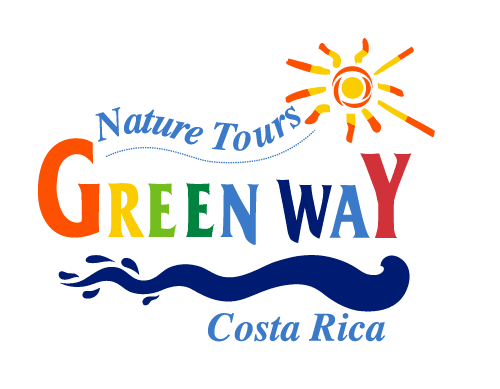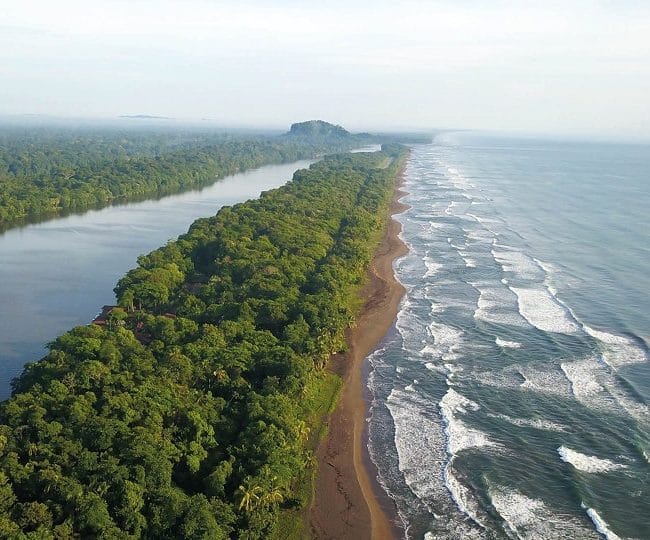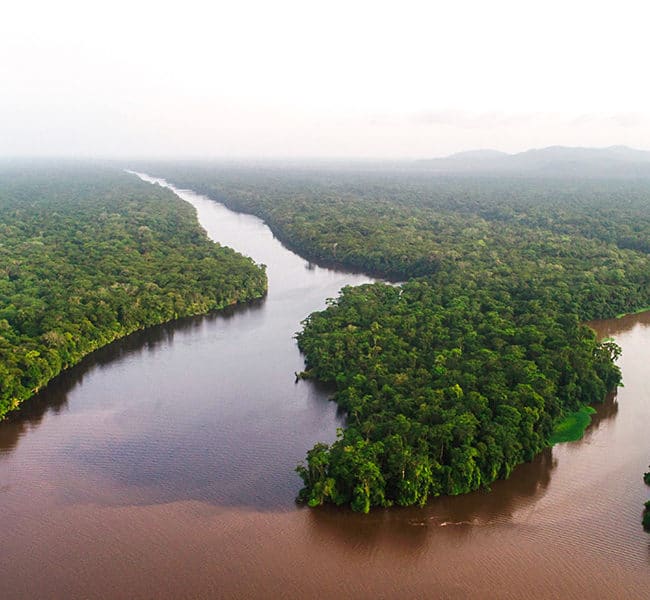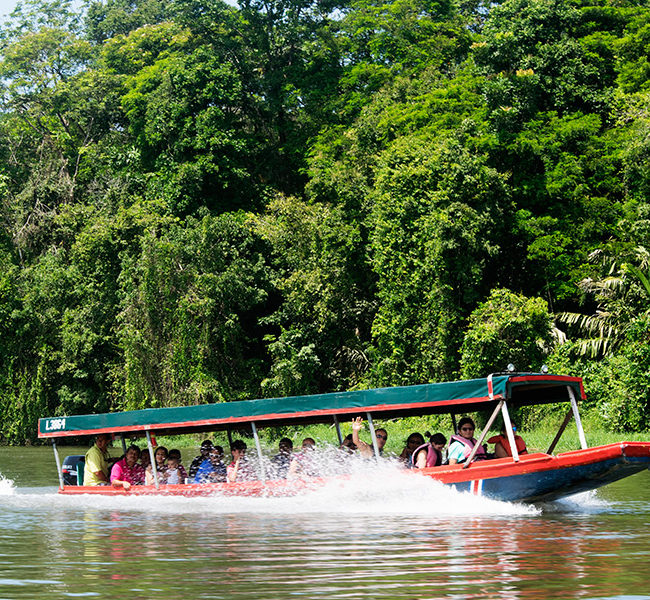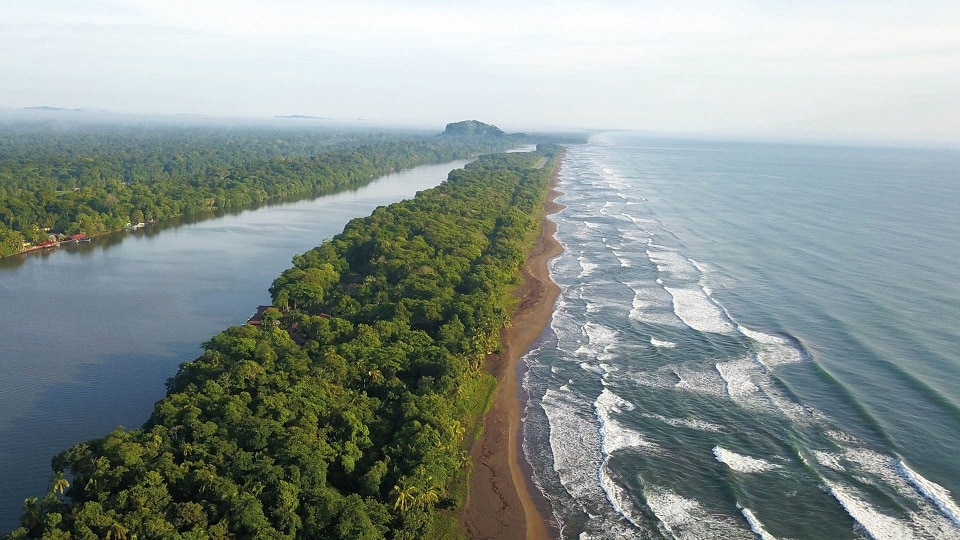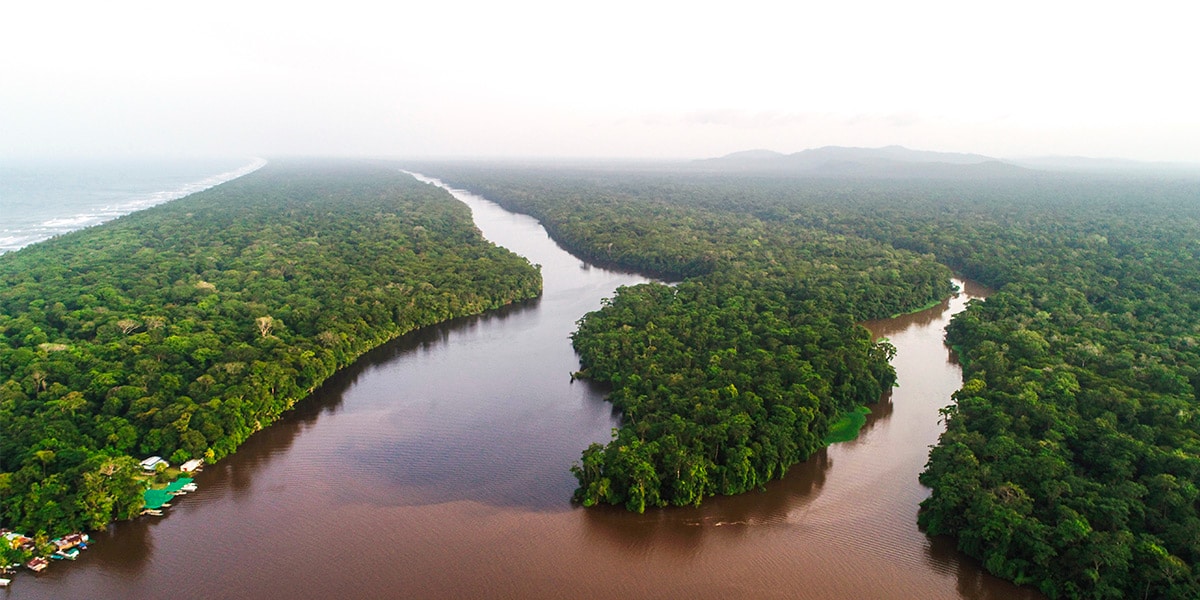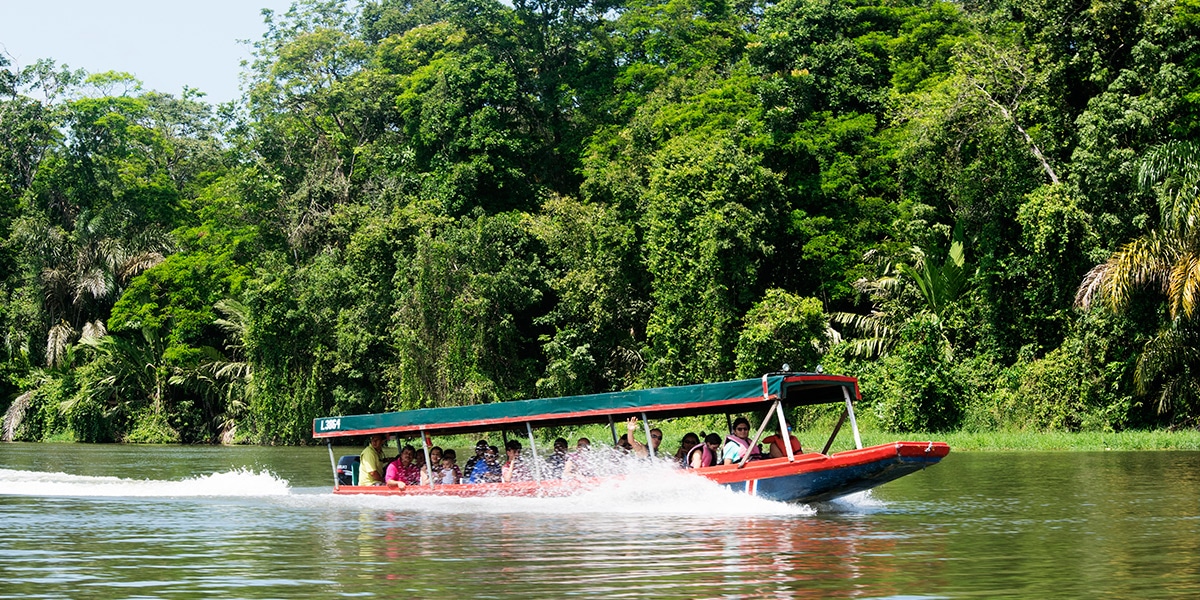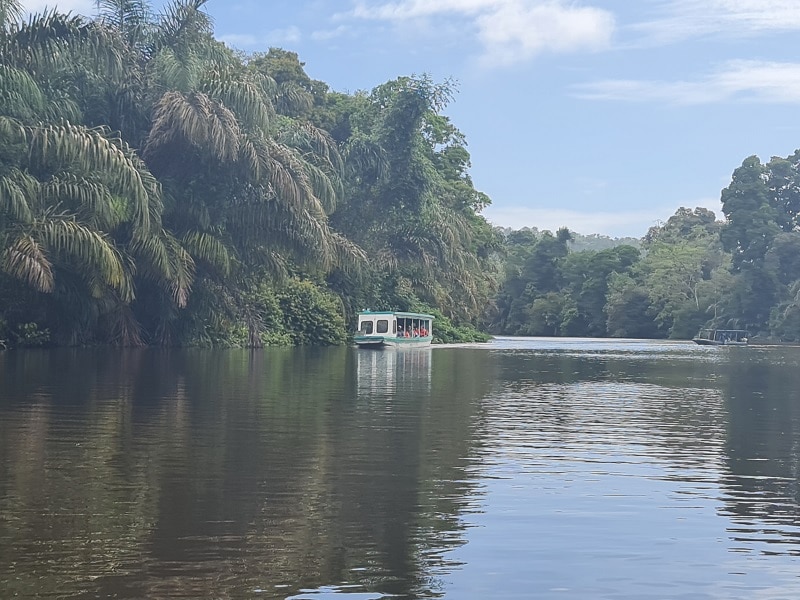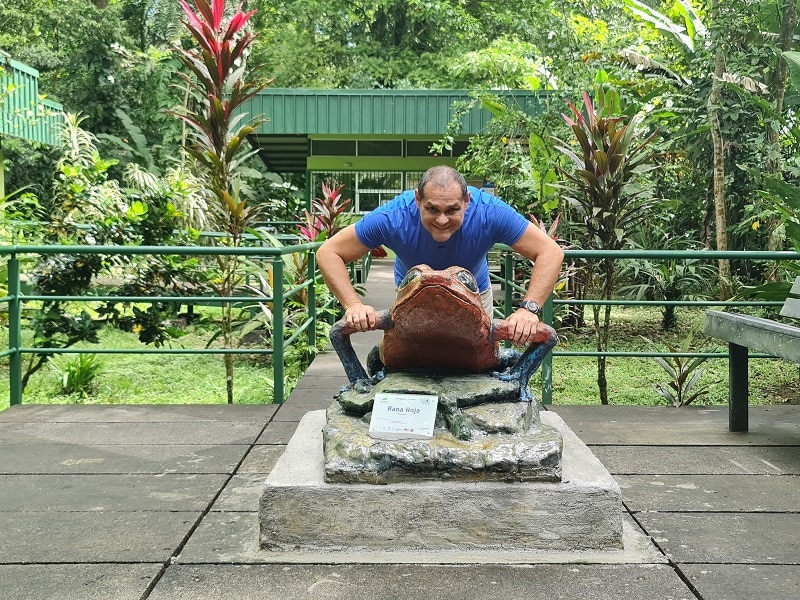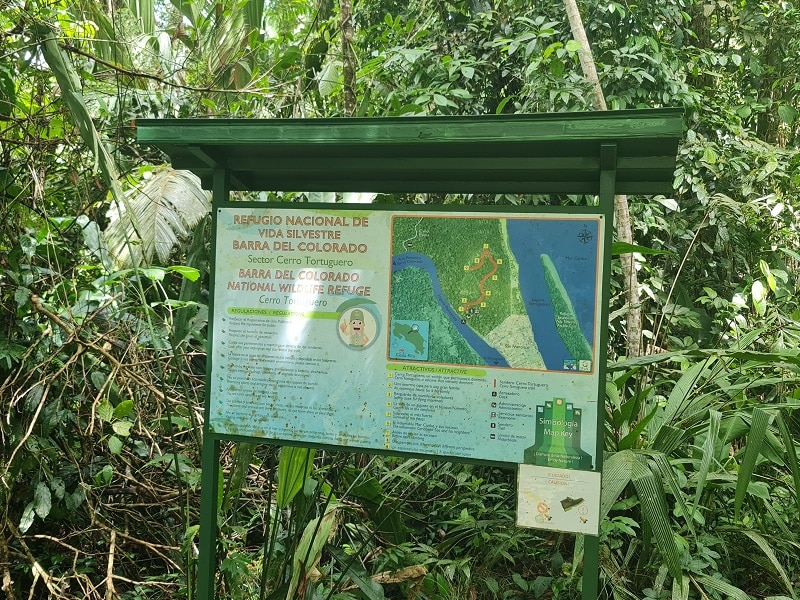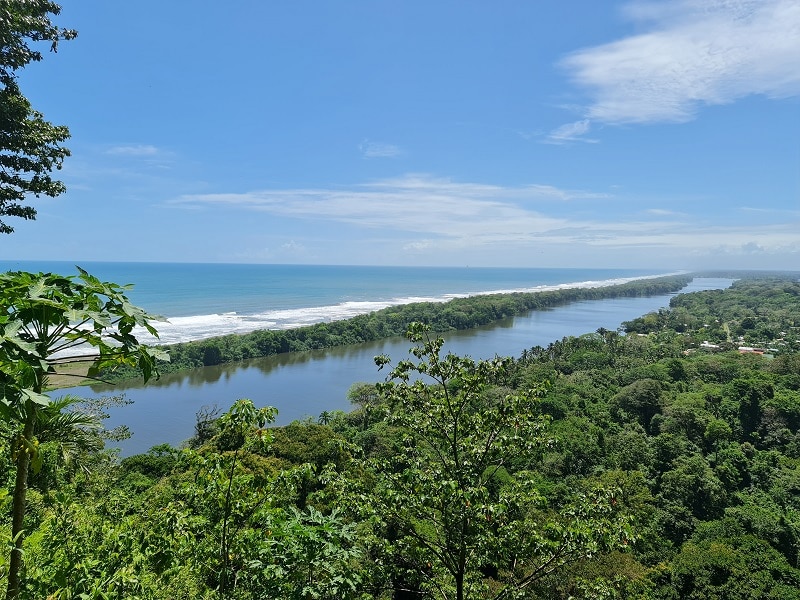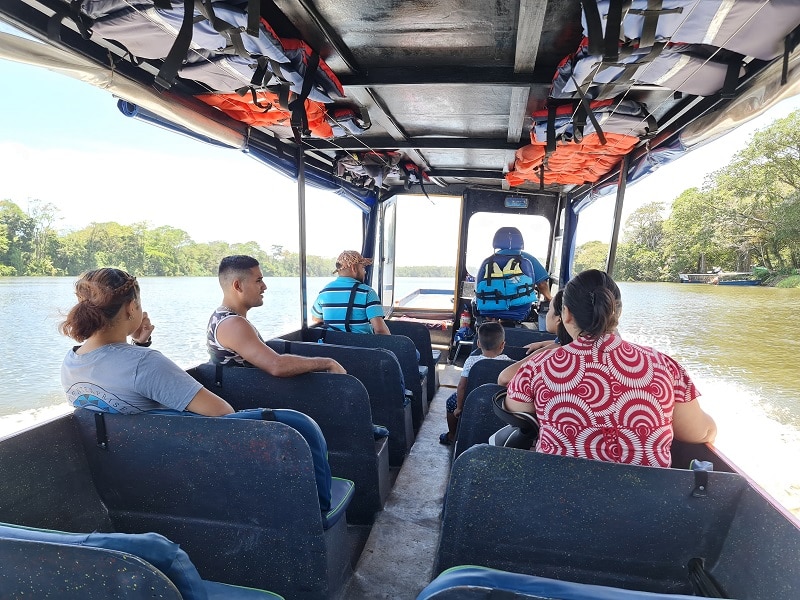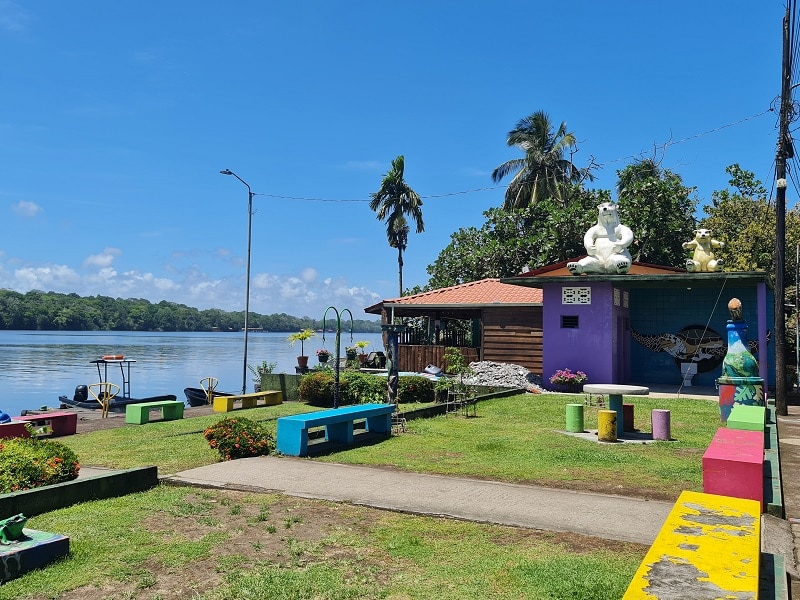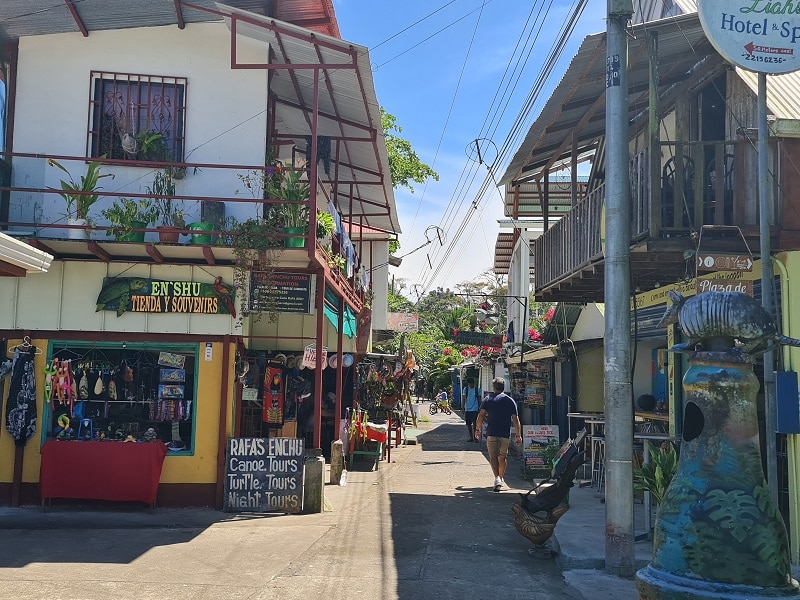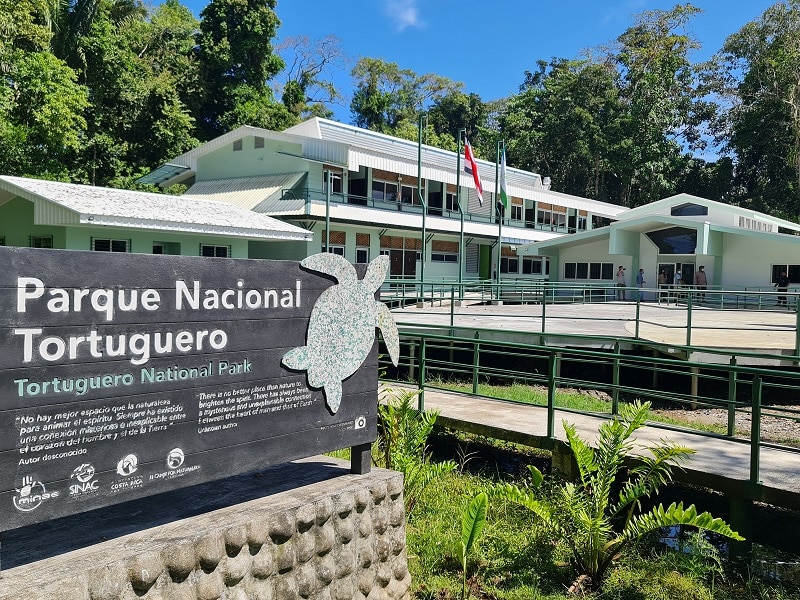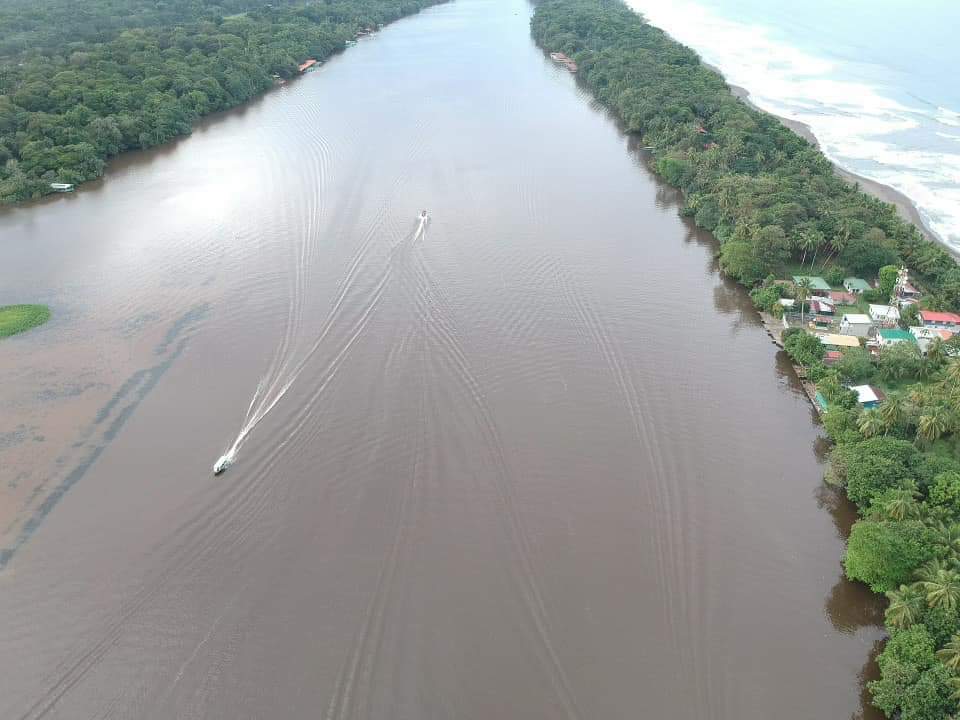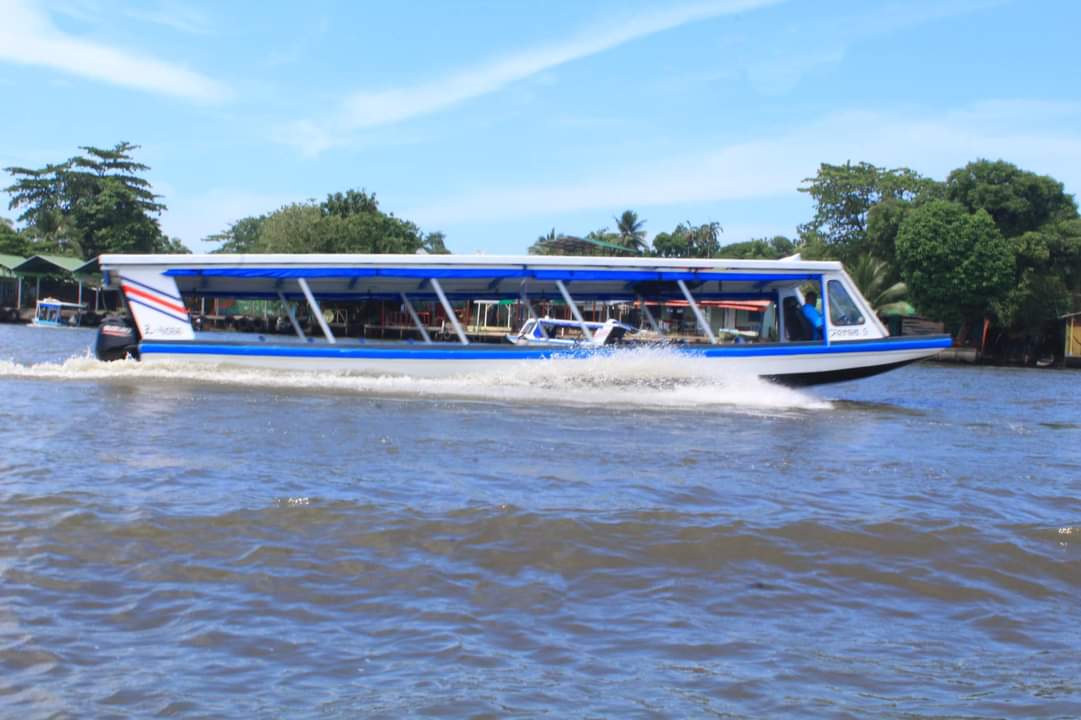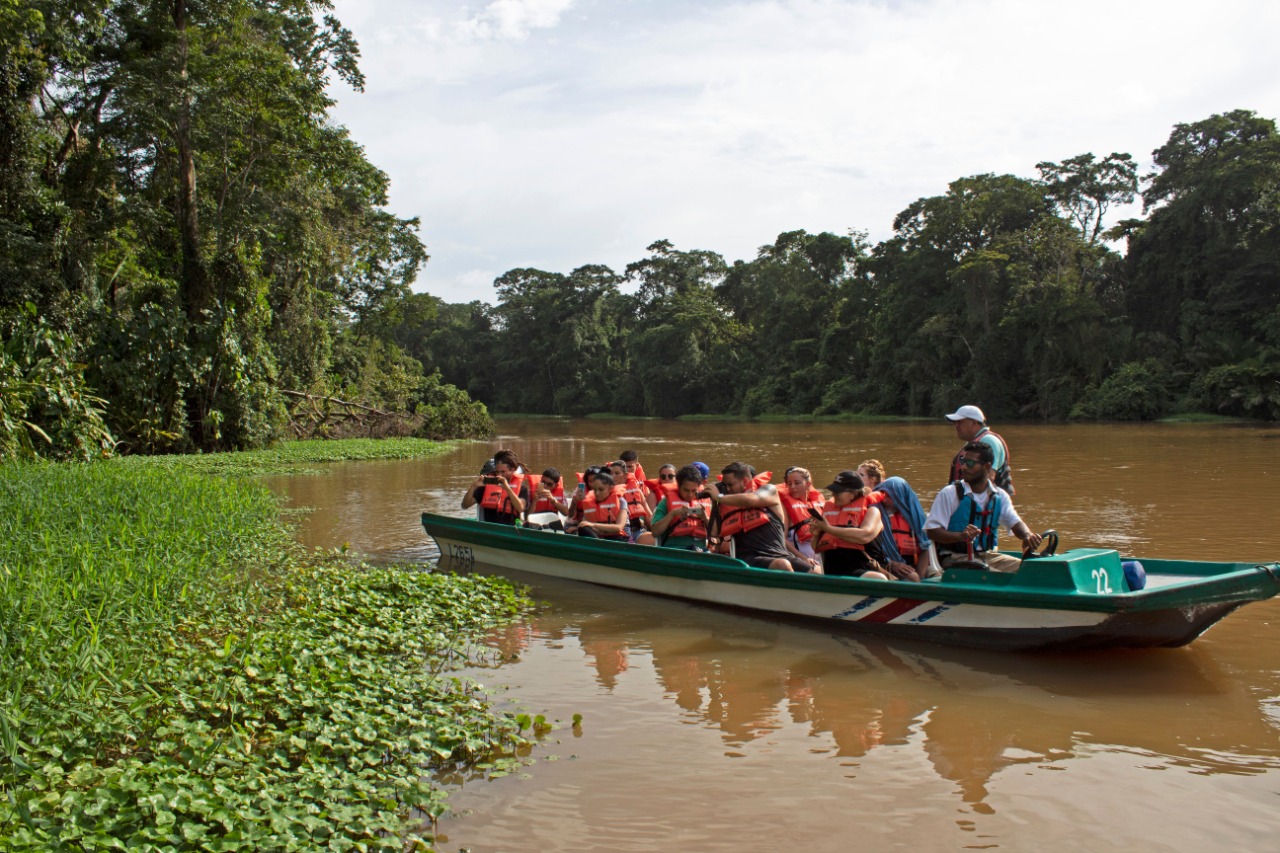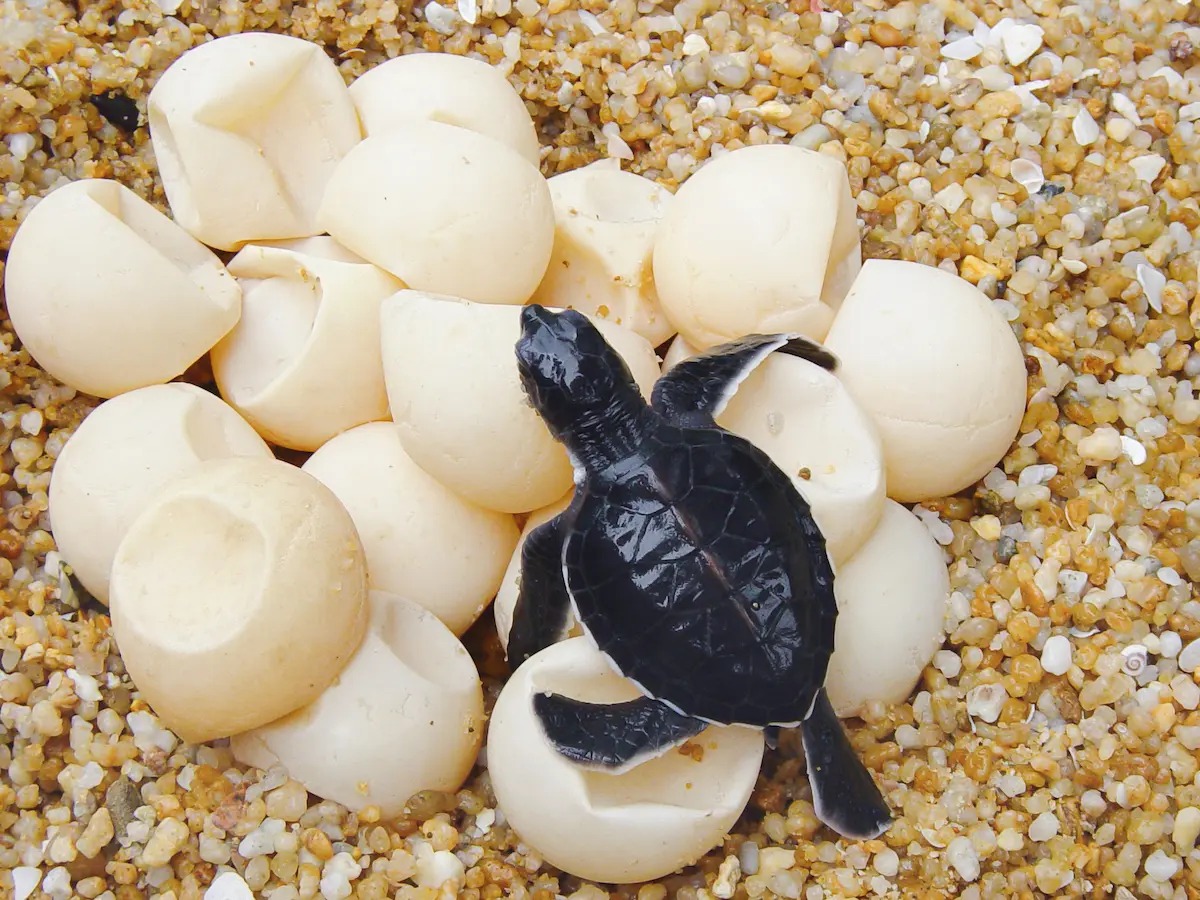Tortuguero One Day Tour
Tortuguero Costa Rica Tour. Private tour from San Jose
TORTUGUERO ONE DAY TOUR
Semi – private from San Jose
TORTUGUERO COSTA RICA TOUR FROM SAN JOSE – SEMI PRIVATE TOUR
Enjoy a true ecological adventure in one of the most beautiful National Parks in Costa Rica with this unique Tortuguero Costa Rica Tour from San Jose and private service.
Tortuguero is considered the Costa Rican Amazon, located in the northern Caribbean side of Costa Rica at only 2 hours from the capital City San Jose, the journey by bus and boat is an amazing experience.
Our Tortuguero Costa Rica Tour from San Jose is a 100% private excursion. Our Naturalist Tour guide will pick you up directly from your hotel in San Jose in a deluxe minivan jus for you. The scenery ride crossing the beautiful Braulio Carrillo National Park on the way to Tortuguero is part of the sightseeing adventure. Upon arrival to La Pavona, a small wharf located just besides La Suerte River.
Board your private boat and enjoy navigating along the river until arrive to Tortuguero National Park. On the way, our boat driver and naturalist tour guide will be spotting the multiple wildlife species common in the area such as caimans, crocodiles, huge iguanas, river turtles, toucans, monkeys, sloths, aquatic birds and many more.
Once at Tortuguero, enjoy a nature walk into the National Park in the sector of Tortuguero Hill with stunning views of the Canales, the Caribbean Ocean and Tortuguero Town.
Tortuguero Hill has an area of approximately 25 hectares and is the highest point on the entire Caribbean coast of Costa Rica, offering spectacular panoramic views of the forest and the dynamics of canals. In addition, it becomes a micro habitat and refuge for a large number of animal and plant species.
The Tortuguero Hill sector is located on the border with the Tortuguero National Park and just 10 minutes from the community of Barra de Tortuguero, so the visitation is directly related to that of this famous ecological destination in Costa Rica, despite the fact that It should be clear that it belongs to the Barra del Colorado National Wildlife Refuge.
This characteristic means that Tortuguero Hill can offer, in addition to its spectacular views and impressive nature, an experience of Caribbean coexistence in the community of San Francisco, which is located at the foot of Cerro Tortuguero.
After visiting this impressive place, we will visit the lush tropical jungle and visit Caño Palma, where you can enjoy the dense vegetation of this wonderful national park and if nature allows us, observe its rich wildlife.
Once these activities are carried out, our next stop will be the Town of Tortuguero, with its picturesque Caribbean atmosphere and beautiful colorful houses and shops that invite the visitor to spend a pleasant moment in their community. Taste the local flavors of the Caribbean cuisine in a pioneer and emblematic local restaurant. After lunch, visit the new and modern facilities of the Tortuguero National Park, which have a beautiful viewpoint of the lagoon and the forest.
Also, if time permits, we will visit the Turtle Museum, which is an ideal place for lovers of turtles and those who wish to learn more about this animal so popular in Costa Rica. It is located at the John H. Pipps Biological Station of the Caribbean Conservation Corporation (CCC) in Tortuguero.
The Turtle Museum aims to educate the population on all aspects related to the different species of turtles that come to our country and as an endangered species, in addition to the flora and fauna of Tortuguero. The museum also has information on the turtle spawning cycle.
It is a natural museum to be able to know first-hand different species of turtles that inhabit different parts of Costa Rica and that arrive throughout the year. It is a place where it is remembered that we are facing an endangered species and as such it must be taken care of in a remarkable way.
In the middle of the afternoon, we will board our boat again that will transfer us back to La Pavona and where the bus awaits us to return to San Jose.
PICK UP TIME: 7:00 AM
DURATION: 10 hours.
TOUR INCLUDES:
-Pick up directly from your hotel in San Jose and surroundings
-Semi Private Transportation in a comfortable minibus with A/C
-Professional & certified naturalist tour guide
-Sightseeing tour along the way
-Bottle of water
– Boat tour from La Pavona to Tortuguero Park and surroundings.
-National Park entrance fee
-1 hour walk to Tortuguero Hill and lookout point.
– Visit to Tortuguero Town and exploring walk
-Visit to the turtle museum
-Great Caribbean Lunch
WHAT´S TO BRING: Mosquito repellent, Tennis shoes, sun cream, Hat, Raincoat or Poncho in case of rain, money for extra expenses.
PRICE PER PERSON: $295 adults / $235 Children (If you have a group contact us for a special rate)
If you prefer to stay overnight in Tortuguero, we also have our Tortuguero Package 3 days / 2 nights package or Tortuguero 2 days / 1 night package. Contact us for more information. For a Costa Rica Vacation including Tortuguero we recommend visit our vacation pacjages section
Tortuguero Costa Rica Tour – Cultural and Natural History of Tortuguero National Park
Enjoy the best of nature with our exclusive Tortuguero National Park Tour – Private from San Jose.
Tortuguero National Park is located northeast of Costa Rican territory and is one of the main tourist icons of Costa Rica because it is internationally recognized for protecting the most important green turtle nesting beach in the Western Hemisphere.
Away from the city and made up of an extensive network of rivers and canals, access is only possible through small boats. This is Tortuguero National Park, a place unlike any other; where the small communities that surround the Protected Wildlife Area, such as Barra del Tortuguero and San Francisco, still preserve their traditions and also enjoy the benefit of having bicycles or small boats as the only means of transportation, making the Tortuguero Costa Rica Tour a true encounter with Caribbean culture.
The Tortuguero National Park is a paradise for research and ecotourism, the ecosystems of the area are so complex and diverse that the visitor can expect anything on the tours, going from tranquility to encountering any of the species of flora and fauna. Characteristics of the Costa Rican Caribbean.
Climate:
In the Tortuguero National Park, the humid tropical forest and very humid tropical forest predominate. The average annual rainfall reaches 6,000 mm. The months with the highest rainfall correspond to July and December, the least rainy are March, April and October. The average annual temperature ranges between 25°C and 30°C. The heat, humidity and rain are companions on the route.
Ecological importance:
- Protects nesting beaches for 4 species of sea turtles: Green (Chelonia mydas), Leatherback (Dermochelys coriacea), Hawksbill (Eretmochelys imbricata), Big-headed (Caretta caretta).
- Protects important populations of endangered species.
- Protects the habitat of the manatee (Trichechus manatus), which is one of the rarest and most threatened mammals in Costa Rica.
- Protects the habitat of the largest feline in America. Tortuguero has one of the largest populations in Costa Rica and a consolidated research program.
- Protects the ecosystem called Yolillal (Raphia taedigera).
Flora and fauna that you will be able to observe during our Tortuguero Costa Rica Tour -Private from San Jose
- 734 plant species.
- 442 species of birds.
- 138 species of mammals (101 genera and 32 families).
- 118 species of reptiles (76 genera and 22 families).
- 58 species of amphibians (27 genera and 11 families).
- 460 species of arthropods.
Featured Species:
- Green turtle (Chelonia mydas): One of the initial reasons for the creation of the PNT is that this species has Tortuguero as one of the main spawning beaches in the world.
- Green Macaw (Ara ambigua): Bird species in danger of extinction that has been recovering its population with Tortuguero as one of the main nesting and feeding sites.
- Caiman (Caiman cocodilus): Species present along the Tortuguero canals, sometimes it is possible to observe it sunbathing.
- Black turtle (Rhinoclemmys funerea): One of the Tortuguero river species. In the canals, several can be seen on the same trunk.
- Jacana (Jacana jacana): One of the most colorful species of birds present in the Tortuguero canals.
- Needle Duck (Anhinga anhinga): A characteristic bird of the Tortuguero canals, it can be seen on branches drying its wings after diving to hunt.
- Red and Blue Frog (Oophaga pumilio): Undoubtedly a common amphibian species in the area, with a very striking territorial behavior.
- Green Macaw (Ara ambigua): Bird species in danger of extinction that has been recovering its population with Tortuguero as one of the main nesting and feeding sites.
- Violaceous Trogon (Trogon caligatus): Species present along the trail, sometimes it is possible to observe it in the clearings along the trail.
- Red-faced Monkey (Ateles geoffroyi) and White-faced Monkey (Cebus capucinus): One of the most striking and dispersing species of plants.
- Manatee (Trichechus manatus). Tortuguero is perhaps the most important region in Costa Rica for the manatee. Although it is quite difficult to observe them because this area has dark waters, the main populations are found here and extend to Barra de Colorado.
- Toucan The chestnut-mandibled toucan or Swainson’s toucan (Ramphastos ambiguus swainsonii) is a subspecies of the yellow-throated toucan which breeds from eastern Honduras to northern Colombia to western Ecuador. It is very easy to see during our Tortuguero Costa Rica Tour
- Sloth The three-toed sloths are arboreal neotropical mammals (also known as “three-fingered” sloths). They are the only members of the genus Bradypus and the family Bradypodidae. One the top animals that tourist search during the boat tours.
SCIENTIFIC RESEARCH IN TORTUGUERO
Research and monitoring of sea turtles in Tortuguero, Costa Rica began in the 1950’s by legendary researcher Dr Archie Carr. Dr Carr continued his work in Tortuguero until his death in 1987 and the Sea Turtle Conservancy (STC) still the project continues every year. In 1959, the STC started the Green Turtle Program with the objective of studying green turtles (Chelonia mydas) in the area. Every year, between June and October, STC researchers collect information on this endangered species. The program combines monitoring and research activities with an Environmental Education and Outreach Program in the community.
Tortuguero National Park and Sea Turtle Watching
Tortuguero is the second most important place in the world for the spawning of the Green Turtle (Chelonia mydas), and the first in the Western Hemisphere. Thousands of turtles come to Tortuguero every year for nesting and spawning, the first days of July and until the end of October. August is the best time to see spawning. The green turtle is named for the color of the fat it accumulates, not because of the color of its shell.
Before doing a tour, it is highly recommended to visit the visitor center that the STC has in Tortuguero. It is a small museum that is on the land where the organization’s scientific station is located. Admission costs $2.50 and is used as a donation for the projects that the STC carries out. The ticket also includes a very interesting audiovisual about the STC, Tortuguero and sea turtles.
Green turtles arrive at Tortuguero beach after a long journey, with a previous stop at their “restaurant” in the Cayos Miskitos (Nicaragua) where they feed on marine plants (especially Thalassia), which abound in this place. They have also mated in the sea, a copulation that can last several, in which the male is perfectly hooked to the female with a kind of hooks that he has on the front of his shell. Females can store semen from different males and fertilize the eggs as they see fit.
The females loaded with eggs arrive at the beach at night, curiously the same beach where they were born. It is one of the great mysteries of the turtles, that despite traveling thousands of kilometers in their migrations, they know how to return to their place of origin for nesting. The males never return to the beach, but stay in the immediate vicinity of it. The females may return to the beach 3-6 times to lay eggs during the mating season, and each time they make a new nest in which they deposit between 90 and 150 eggs.
The incubation of the eggs lasts approximately 60 days, during which they are totally unattended by their mother. For this reason, she is in charge of covering them and camouflaging them well, so that they can go as unnoticed as possible. A turtle does not spawn every year, it is usually every two or sometimes more.
When the mating season is over, the turtles return to their “restaurant” in Nicaragua where they will recharge their batteries before embarking on their long migrations, which can even take them to Europe. They are very old animals, true relics, reptiles that have been on Earth for more than 200 million years. They can live between 100 and 200 years and can weigh between 100 and 200 kg (other species such as the leatherback can weigh 300-500 kg).
The tours try to teach tourists the complete nesting process, with all its phases, although sometimes each phase is seen in a different turtle. Tourists used to walk the beach with the guides looking for the turtles, and many nights I could make hundreds of tourists doing this. A decrease in the number of turtles arriving in Tortuguero began to be observed, and for this reason, since 2004 the tour system changed and now uses the Tracker Program, something innovative that began to be done here. The trackers look for turtles at night and when they find one, they tell the guide to take their tourists there. While the tracker searches, the guides with their tourists wait behind the beach at waiting stations, which have benches to sit on and a canopy. The guide takes advantage of this waiting time to talk about the turtles and thus teach the tourists.
The night tour is purchased directly from the tourist guide association of Tortuguero and the departures of the groups are very planned. The beach is divided into sectors and each group must go to the one that corresponds to it.
Tortuguero National Park and the HIKE TO TORTUGUERO HILL
Cerro Tortuguero is the highest hill in a vast area that is comprised of totally flat plains. Hence, from Cerro Tortuguero you can appreciate the landscape that surrounds the canals, the tropical rain forest, the lagoons and the Caribbean Sea. A beautiful nature and adventure tour in the heart of Tortuguero.
The hike to Cerro de Tortuguero is a beautiful strong naturalistic hike, as it lasts approximately 2 hours. It is advisable to do it with a guide, since the path has mud and slippery parts from where you can fall. Caution must be exercised. The departure point is in the town of San Francisco, about 10 – 15 minutes by boat from the center of the town of Tortuguero. There or in Tortuguero Center you can hire a guide for the tour. From above you have a beautiful view of the main canals, the town, the extensive jungle and the sea.
Tortuguero National Park and visit to the town
The town of Tortuguero maintains, at least at first sight, the essence, and the original appearance of a town in the jungle despite the massive arrival of tourism.
Tortuguero is a town where its inhabitants have always lived off turtles, hunting them, eating them and trading their precious shell. Today, the inhabitants of Tortuguero continue to live off the turtle through its tourist exploitation.
Tourism and environmental conservation became the main economic activity in this area. It is one of the main tourist attractions in Costa Rica and practically a mandatory visit for all tourists who want to enjoy nature.
The town is small with a population of about 750 inhabitants. Access to Tortuguero is by boat. There is a central pier from where both locals and tourists board and alight boats. It has a small park surrounded by colorful craft shops, small restaurants and hotels, local fruit sales, mainly coconut water, pizzerias, fried chicken and grocery stores. A central avenue leads from north to south, with small shops on both sides. The town is so small that in an hour you can see everything.
In the little town you can visit the Sea Turtle Museum. Also, the small church, the school and the main facilities of the National Park which are very beautiful and modern.
The area of the largest hotels is located in areas surrounding the town and mainly along the canals. From these hotels excursions to the town are made for a few hours to later enjoy the attractions and comforts of the hotels.
Our Tortuguero Costa Rica Tour from San Jose is an excellent opportunity for all those tourists who are in San Jose and only have one day available to enjoy this ecological paradise. If you prefer visit Tortuguero as part of a multiday vacation package, we highly recommend these options: https://greenwaytours.com/tour-item/costa-rica-experience-8d-7n/ or for students groups https://greenwaytours.com/tour-item/costa-rica-turtles-and-rainforest/
For those who wish to visit Tortuguero for 2 or 3 days, we recommend our all-inclusive packages in the beautiful hotels in the area. For more information on these options please visit
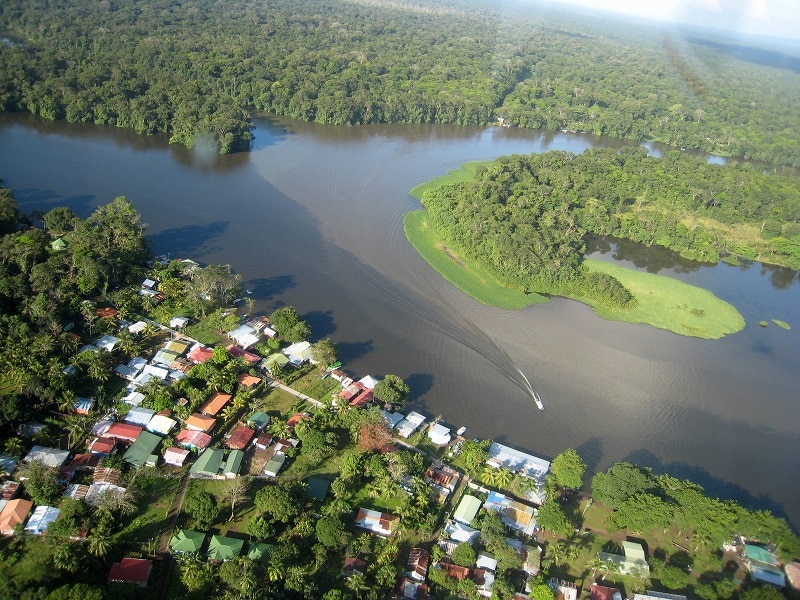
-
Destination
-
Departure
Your Hotel in San Jose -
Departure Time
7:00 AM -
Return Time
6:00 PM -
What´s to Bring
Hiking Shoes, Binoculars, Camera, Beach Sandals, Suntan Lotion, Hat, Mosquito Repellent, raincoat or poncho in case of rain
